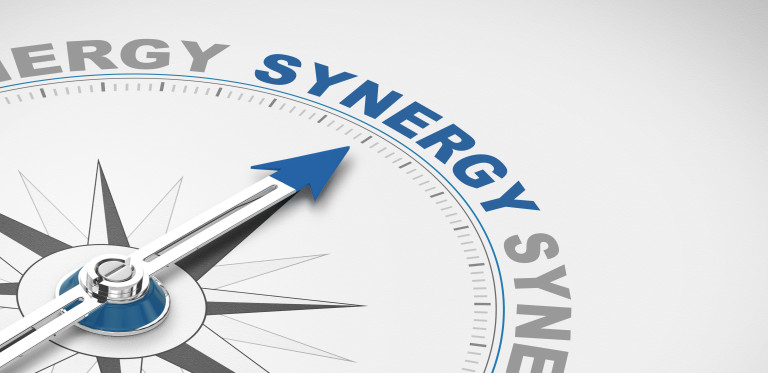A Primer on Synergies in M&A

1. Revenue Synergies
Revenue synergies occur when two combined companies are able to sell more products and/or services than they would have otherwise achieved separately.
Cross-Selling / Product Bundling
The most common synergy opportunity sought by strategic buyers in an M&A transaction is the opportunity for cross-selling. Cross-selling is the ability of the acquirer to offer its product or services to the customer base of the target company, and vice versa. Often referred to as “bundling”, strategic acquirers will look for opportunities to combine existing offerings with that of the target company to provide a more comprehensive solution set to its customer base, with the goal of offering a more compelling value proposition and the opportunity for better pricing. Another compelling attribute of cross-selling synergies is opportunity to rationalize the nature of the sales team. For example, imagine a rep from Company A visits a client to discuss a product / service, and on the way out the door passes a rep from Company B visiting the same client to discuss a related product / service. If Company A and Company B were to merge, a single sales rep could visit that same customer and, in theory, discuss a broader product offering, presenting the opportunity to rationalize the or reconfigure the make up of the sales team.
New Distribution Channels
Similar to cross-selling, M&A can be used by a strategic acquirer to access a new distribution channel through the acquisition of a target with an established presence in this desired channel. One of the most common examples of this revenue synergy is in the retail sector as brick and mortar retailers look to acquire E-commerce businesses and platforms to broaden the reach of the acquirer to make their products more readily available to consumers.
Geographic Expansion
Another compelling revenue synergy is the ability to enter new geographies. Often times, strategic acquirers will look to enter a new geography via M&A by acquiring a target with an established presence in the desired territory. By expanding geographic reach through acquisitions, strategic acquirers are able to leverage the “trust” the market has with an established brand or company that has been operating in that market for a period of time. In addition, when expanding internationally, acquiring a business that is well versed in cultural customs often times proves to be a more efficient of entering a new market as opposed to organic expansion.
2. Cost Synergies
Cost synergies represent the opportunity to reduce overall costs because of combining businesses. There are several common ways in which companies seek to extract cost synergies through mergers and acquisitions, including:
- Reducing staff headcount by identifying functional duplication
- Reducing rent by consolidating offices and other locations
- Consolidating suppliers &/or renegotiating supplier terms
- Increasing utilization of capital assets such as factories, transportation etc.
- Reducing professional services fees
- Reducing costs through exchange of best practices
Cost synergies are often associated with the flurry of M&A activity during the 1980’s and are often viewed with a negative bias by the general public as they primarily focused on massive reductions in headcount. Due to the advancements in technology, many companies operate with a much leaner operational infrastructure today. Due to this, the majority of strategic buyers in today’s market look to achieve cost synergies through greater purchasing power with supplies or vendors (i.e. insurance, raw materials).
3. Financial Synergies
Financial synergies relate to a company’s cost of capital, the costs the company needs to meet in order to secure the various funding sources required to finance the operations of its business.
When a smaller company seeks to borrow money, the lender will charge a given interest rate to compensate for the risk attached to the loan. All things being equal, when the borrower merges with a larger business, the interest rate it will be charged should be lower in recognition of the larger balance sheet and cash flows supporting the loan. This will not always be the case, but it is a possible synergy that might flow from an M&A transaction.
Conclusion
Synergies in M&A are an important consideration when a seller is fielding offers from both strategic buyers and private equity firms. Synergies are an important aspect of merger and acquisition transactions and need to be carefully considered when planning the sale of a business. Sellers with a mind on highest value for their Company should prepare themselves for synergistic pricing by clearly identifying and providing supporting documentation to present to potential strategic buyers as ideas during the sale process.
Image Courtesy of burgisbullock.com
< Blog



